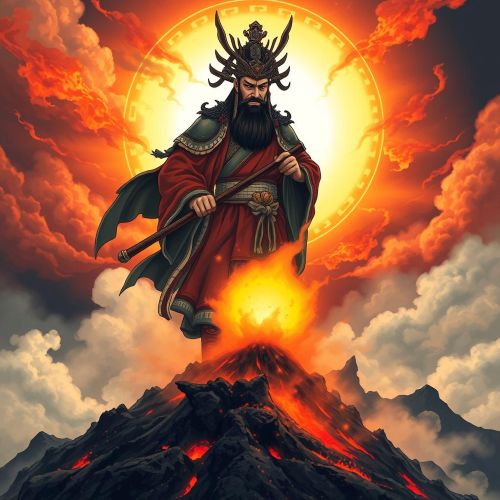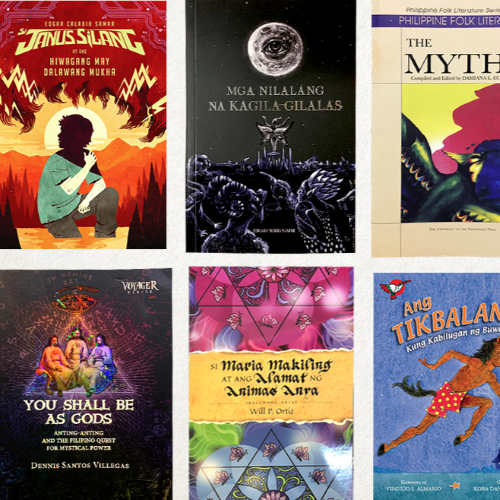The Children of the Limokon: A Creation Story from Philippine Mythology
Introduction
Among the rich tapestry of Philippine mythology, few stories are as deeply rooted in the culture of the indigenous people as The Children of the Limokon. This tale originates from the Mandaya people of Mindanao, a southern region of the Philippines known for its vibrant oral traditions. In this myth, the Limokon—a sacred bird—plays a central role in the creation of humanity. This origin story not only offers insight into the Mandaya worldview but also reveals how nature and divinity are intertwined in their understanding of life and existence.
The Sacred Limokon Bird
The Limokon is a type of dove or pigeon, often associated with omens and spiritual messages in various Filipino indigenous beliefs. In the Mandaya tradition, however, the Limokon takes on a more powerful and divine role. It is considered a celestial being or a godly messenger, and its presence signifies something profoundly sacred.
The Mandaya people believe that the Limokon is not just a bird but a supernatural entity capable of shaping destiny. Its call is used in decision-making, such as determining auspicious days for travel or hunting. This belief lays the foundation for the creation myth involving the children of the Limokon.
The Birth of Humanity
The story begins with a Limokon bird flying over the great river that flows through the heart of Mindanao. The bird carries with it a bamboo stalk—one of the most important elements in Austronesian mythologies. Bamboo, known for its strength and hollow form, is often used as a vessel of life and fertility in various Southeast Asian myths.
As the Limokon lands gently on the riverbank, it sets down the bamboo stalk. From within the bamboo, two human infants emerge—one male and one female. These are the children of the Limokon, the first humans to walk the earth. The myth explains that the Limokon nurtured and protected them until they were old enough to survive on their own.
The children eventually became the ancestors of the Mandaya people, and by extension, all of humanity. Their divine origin from the Limokon solidified their link to nature, birds, and the spiritual world, emphasizing the Mandaya’s reverence for harmony with the natural order.
Symbolism in the Myth
The children of the Limokon myth carries multiple layers of symbolism. First and foremost, it underscores the sacredness of birds in the Mandaya belief system. Birds are not merely animals; they are vessels of divine will and creation.
Secondly, bamboo symbolizes fertility, resilience, and connection between worlds—earth, water, and sky. That humans are born from bamboo delivered by a bird ties the elements of the natural world into a cohesive origin story. This reflects a worldview where humans are part of a delicate balance among all living things.
Cultural Context and Regional Variants
This myth is particularly fascinating because it echoes other origin myths found across the Philippine archipelago. Similar tales exist among other tribes such as the Bagobo, Manobo, and T’boli, where birds, bamboo, or a combination of both serve as creation elements. These shared themes suggest a common cultural root among Austronesian peoples and their mythologies.
The children of the Limokon story also offers an explanation for tribal lineages and customs. By identifying their ancestors as divine children of a sacred bird, the Mandaya people preserve a sense of identity, pride, and continuity with their spiritual beliefs and the land they inhabit.
Modern-Day Influences
While the myth of the children of the Limokon is not widely known outside anthropological circles, it continues to influence Mandaya art, storytelling, and spiritual practice. Festivals and rituals sometimes feature bird motifs, and the Limokon still holds spiritual importance in regional folklore.
In recent years, interest in indigenous Philippine mythology has been rekindled, especially among younger generations and cultural historians. Stories like the children of the Limokon are being retold in books, educational programs, and even animated short films, ensuring that this beautiful origin myth remains alive.
Conclusion
The story of The Children of the Limokon is more than just a myth—it is a profound narrative that illustrates the interconnectedness of humans, nature, and the divine. For the Mandaya people, and by extension the wider Filipino cultural tapestry, this myth stands as a reminder of humanity’s sacred origins and the importance of living in harmony with the natural world.
As more people rediscover the beauty of indigenous mythology, tales like the children of the Limokon offer timeless wisdom and cultural richness worth preserving for generations to come.










